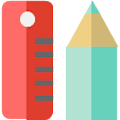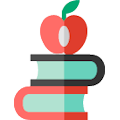
Hello!
My name is Steve Reifman, and I am a National Board Certified elementary school teacher, author, and speaker in Santa Monica, CA.
SteveReifman.com is a resource for elementary school teachers and parents. My mission is to teach the whole child—empowering students to succeed academically, build strong character, learn valuable work habits and social skills, and take charge of their health and wellness.
A Brand New "Learning How to Learn" Strategy:
This week my video series features music, the seventh independent learning strategy I shared during the “Learning How to Learn†Workshop I presented to parents and students last fall. Using music in a variety of ways as a study strategy yields powerful results. Especially helpful is the use of “piggyback songs.†When we take the tune of a familiar song and substitute content-related lyrics for the original lyrics, then we are using a piggyback song. About two-thirds of my students attended the hour-long, after-school workshop, and I followed up with the families of the remaining children at a later time. Though I try to create rich, authentic, contextual learning experiences for my students on a daily basis, there are still times when they need to learn how to study and remember discrete pieces of information independently, especially as they progress through the upper elementary grades and into middle school and high school.
A Brand New "Learning How to Learn" Strategy:
This week my video series features movement, the sixth independent learning strategy I shared during the “Learning How to Learn†Workshop I presented to parents and students last fall. Incorporating movement into what would otherwise be sedentary study sessions makes a significant impact on learning. About two-thirds of my students attended the hour-long, after-school workshop, and I followed up with the families of the remaining children at a later time. Though I try to create rich, authentic, contextual learning experiences for my students on a daily basis, there are still times when they need to learn how to study and remember discrete pieces of information independently, especially as they progress through the upper elementary grades and into middle school and high school.
Two Brand New "Learning How to Learn" Strategies:
This week my new video series features the fourth and fifth independent learning strategies I shared during my “Learning How to Learn†Workshop: acronyms and acrostics. These mnemonic devices help students effectively learn discrete pieces of information. I hosted the workshop for my students and their families on October 26, 2011. About two-thirds of my students attended this hour-long, after-school workshop, and I followed up with the families of the remaining children at a later time. Though I try to create rich, authentic, contextual learning experiences for my students on a daily basis, there are still times when they need to learn how to study and remember discrete pieces of information independently, especially as they progress through the upper elementary grades and into middle school and high school.
Brand New "Learning How to Learn" Strategy:
This week my new video series features the third independent learning strategy I shared during my “Learning How to Learn†Workshop: novelty. The human brain naturally remembers things that are off-the-wall, unexpected, and unusual. We can use this fact to help children learn academic content. I hosted this workshop for my students and their families on October 26, 2011. About two-thirds of my students attended this hour-long, after-school workshop, and I followed up with the families of the remaining children at a later time. Though I try to create rich, authentic, contextual learning experiences for my students on a daily basis, there are still times when they need to learn how to study and remember discrete pieces of information independently, especially as they progress through the upper elementary grades and into middle school and high school.












